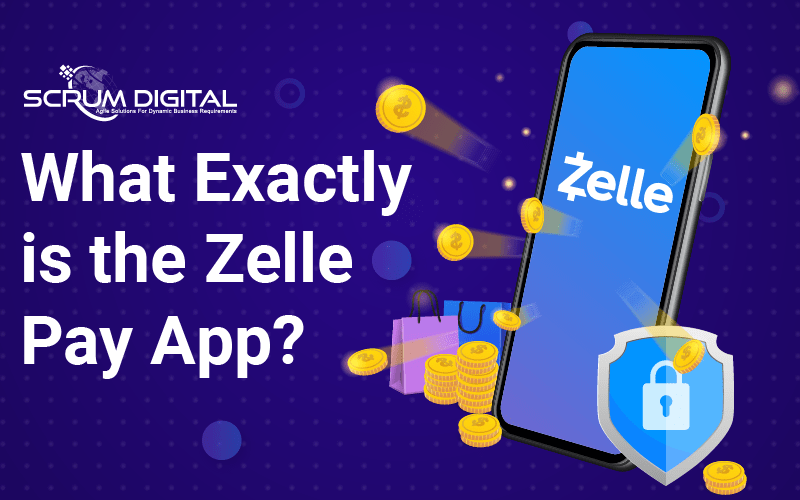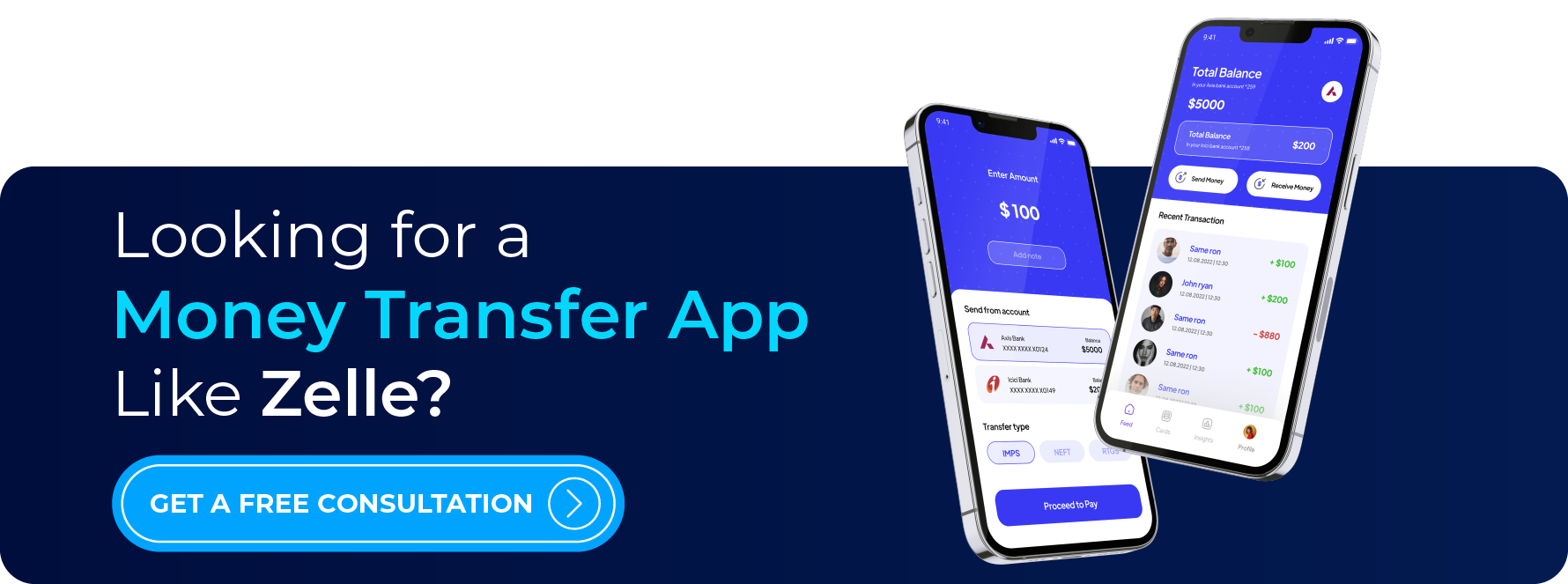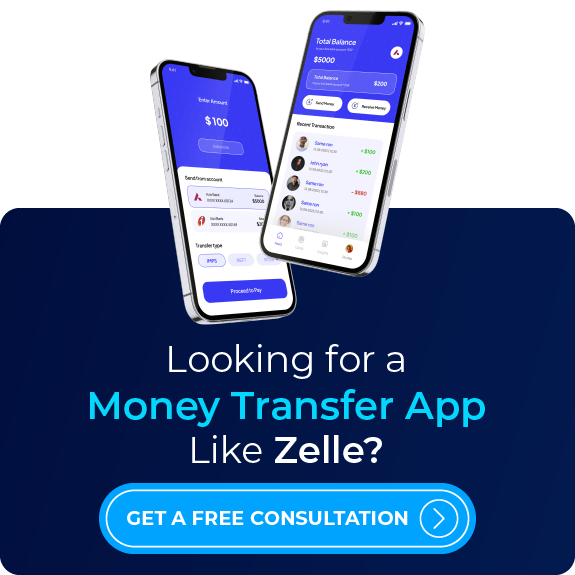Zelle, one of the main peer-to-peer (P2P) payment networks, was created by a group of major banks. This platform was developed by Bank of America Corp., JPMorgan Chase & Co., and Wells Fargo & Co. to compete with well-known third-party P2P services like Square Cash, PayPal’s Venmo, and The Cash App. It allows users to send money to friends, relatives, and others on the platform.
In September 2017, the Zelle network became active. Currently, the network includes over 1700 banks and credit unions and has completed over 490 billion transactions in 2021. Its seamless integration with traditional banks has positioned it as a strong competitor in the market.
Similar to Zelle, Cash App bank services offer unique features, enabling users to manage their transactions directly through their linked accounts. This approach simplifies financial management for users who prefer quick and secure transactions.
Additionally, Cash App online has revolutionized the P2P payment space, providing flexibility and convenience for users to send or receive money anytime, anywhere. Its user-friendly interface has made it a popular choice among digital payment platforms.
Read this entire blog to get an in-depth analysis of the Zelle Business Model and how it can be beneficial for your business.
What Exactly Is Zelle?
Zelle is owned by Early Warning Services LLC, a fintech company that offers financial institutions fraud monitoring and prevention services. San Francisco, Chicago, Tempe, and Scottsdale are areas where it has offices for operations.
Whereas, a group of organizations that includes Wells Fargo, Bank of America, Chase, U.S. Bank, PNC, BB&T, and Capital One controls Early Warning Services.
With the help of this online payment system, customers may send money to other users directly from their bank accounts. Exclusively US account holders with banks that are participants in the Zelle network may use Zelle, as the app is only available in the US.
For those looking to transfer funds between platforms like Zelle to Cash App, users often explore various workarounds since direct integration isn’t available.
The software was developed in collaboration with 30 central banks in the United States. As more users adopt payment apps like Venmo, Zelle continues to stay competitive with its seamless bank transfers.
Now that it is accessible, users are quickly downloading it from the app store and using the services it offers. Additionally, for those who prefer modern digital options, platforms like Cash App online provide an alternative way to manage and transfer money conveniently.
How Does Zelle Works?
As previously stated, Zelle allows its users to simply send and receive money to and from anybody on the site. The registration procedure is fairly simple, and once completed, app users may effortlessly send money to their families and friends using the app.

The network is currently only available to customers. As a result, businesses must rely on alternative payment methods. Visa Direct and Mastercard Send payment rails to power the app.
Banks currently use either of the two as their payment processor, therefore the software essentially allows any bank to be a part of the Zelle network.
In contrast to other money transfer services, Zelle employs Zelle Moves to transfer funds directly between bank accounts. In order to start a bank transfer, both accounts’ account numbers are frequently needed. A few business days may also pass before this kind of transaction is completed.
With Zelle, transactions take place more quickly and customers may send money in just a few minutes from one checking account to another.
Customers only need the recipient’s phone number or email address to send money. The recipient then gets an email from Zelle with a link to accept payment and a screenshot of a pending payment. By clicking on the link, the recipient can get the money.
The delivery of funds might take up to three days if the recipient is a first-time user. In order to receive payments if the recipient’s bank is not one of the participating banks, they must download the Zelle app and register their account with an email address.
How Does Zelle Earn Money?
Zelle generates revenue by enabling payments between banks. Participating banks on the platform gain income whenever a user uses Zelle to make a payment.
The Zelle concept’s unique feature is that the company doesn’t generate money independently. These payments may be made via Zelle without the banks being charged a third-party fee.
As a result, customers benefit from low-cost P2P money transfers without having to pay commissions or fees to a third party that runs the programme.
The app will continue to be available for free for the foreseeable future, as stated in the company’s mission statement. In 2018, Zelle added a new feature to the app that allows users to pay merchants for items such as groceries.
The merchant pays a 1% fee for payment processing, with the money going to the bank that runs the payment network.
The Engine of Future Growth

Zelle’s popularity is growing significantly, as the US populace increasingly prefers digital payment options.
The ease of usage of Zelle through the user’s bank account makes it a beneficial and handy alternative to its rivals. An average of 50,000 Americans join Zelle, and the company’s user base is increasing by an astonishing 15% every quarter. The banks are clearly the big winners with the Zelle app.
One of Zelle’s benefits is that it is the only app that is directly linked to the user’s bank account, allowing for a smooth means of sending money without the need for a wire transfer.
In March 2022 the total users of Americans using Zelle Pay were 61.6 million users and its estimated to reach 82.4 million users by 2024.
Another benefit Zelle has is that it limits the support and use of payment applications such as Venmo and PayPal. Many banks observed a significant decline in demand for money transfer services prior to the debut of Zelle.
Zelle not only offers a simple service for customers who have bank accounts, but it also introduces a new product that raises public knowledge and faith in the existing banking system.
Zelle’s Competitors
Zelle competes with other P2P companies. However, none of these rivals has a direct link to your bank account, allowing customers to transfer payments to third parties with ease. The following fintech businesses are among its main rivals
1. Venmo
A well-known PayPal subsidiary that provides debit cards and P2P money transactions.
2. PayPal
The payment method that allows for internet money transactions.
3. Block
(formerly Square) provides merchant services and point-of-sale payment systems, as well as P2P payments through the Square Cash app.
4. Pay with Apple
Apple devices support mobile payment.
5. Pay Using Google
Android-specific digital wallet platform and online payment system.
Zelle is a secure P2P payment network that offers its consumers a seamless transaction. This blog focuses on all the information you require to utilize the Zelle app for business purposes and how the Zelle Business model works.
Get in touch with the ScrumDigital team for world-class mobile app development services to build tailor-made financial applications in a collaborative manner that aligns with your business growth.




